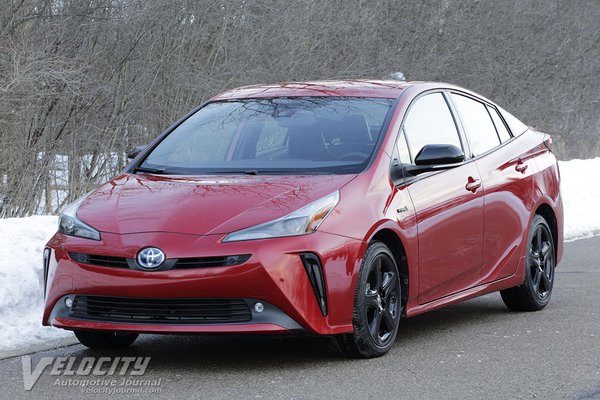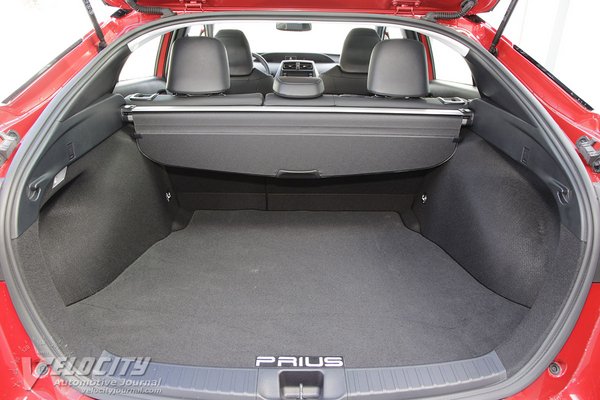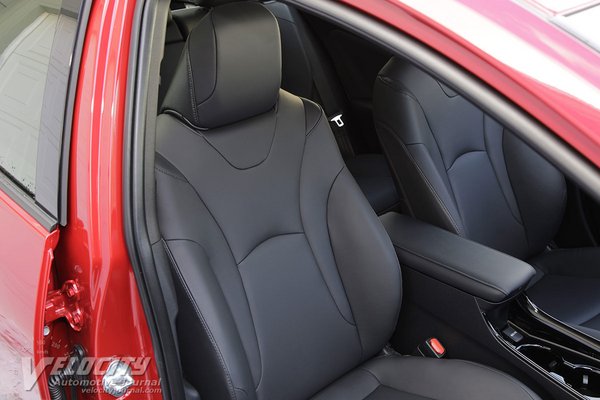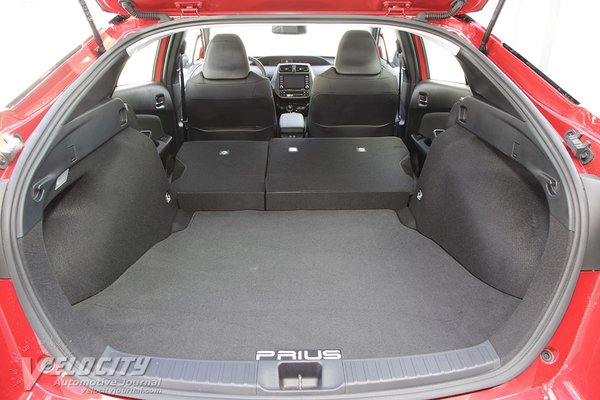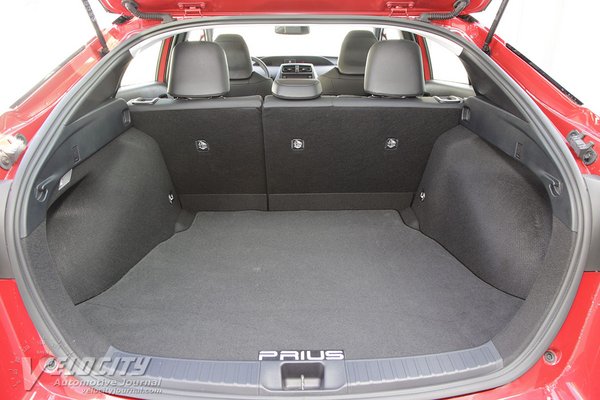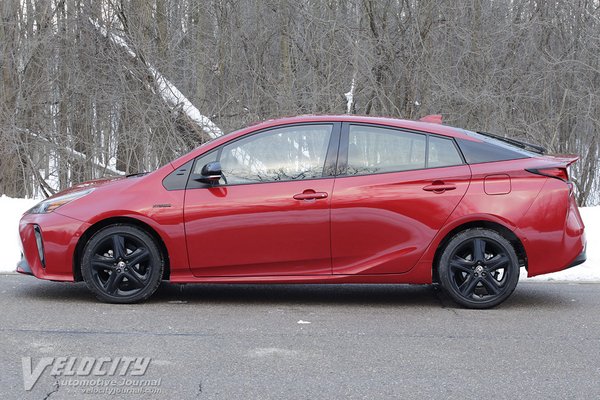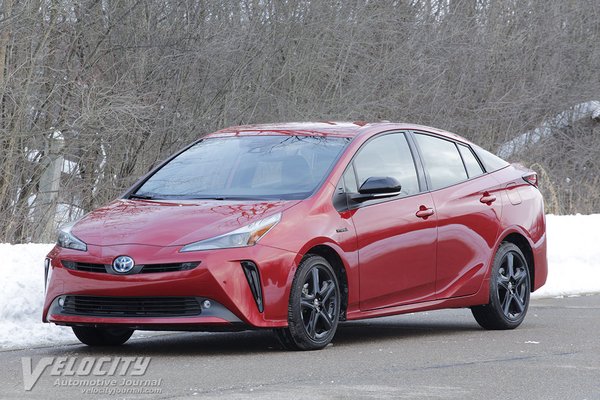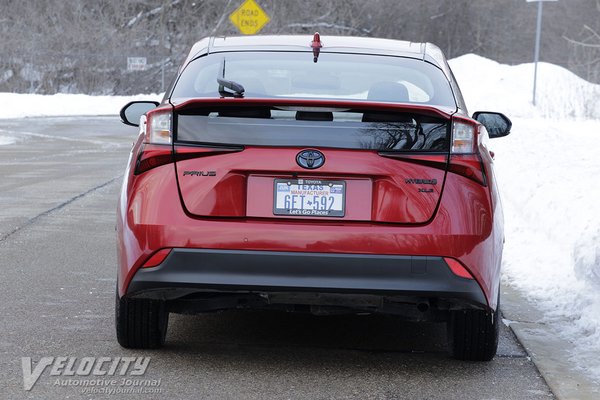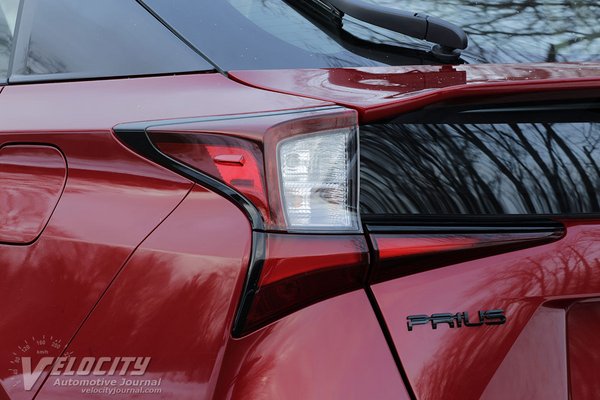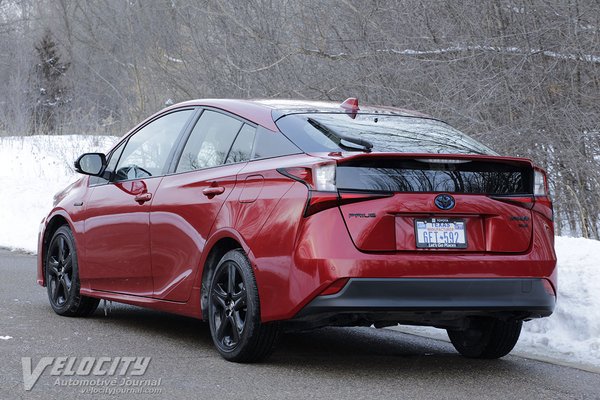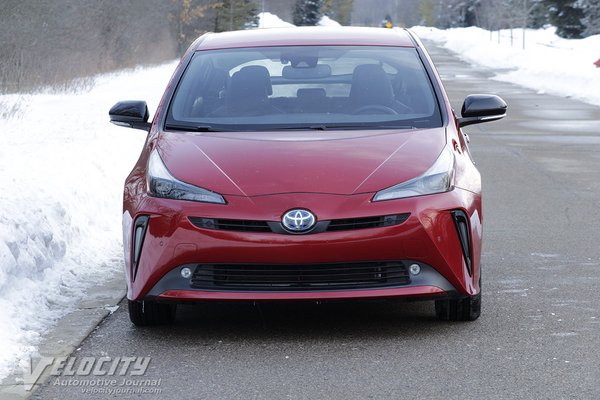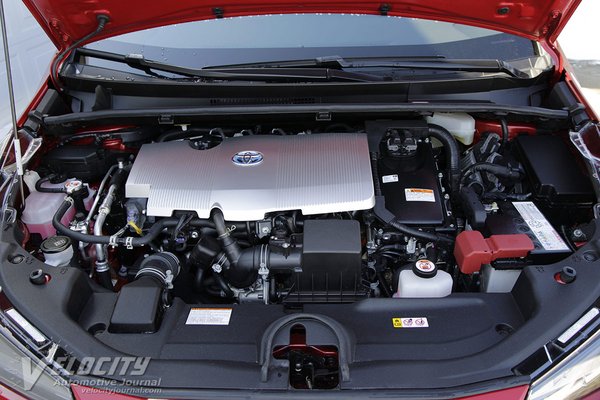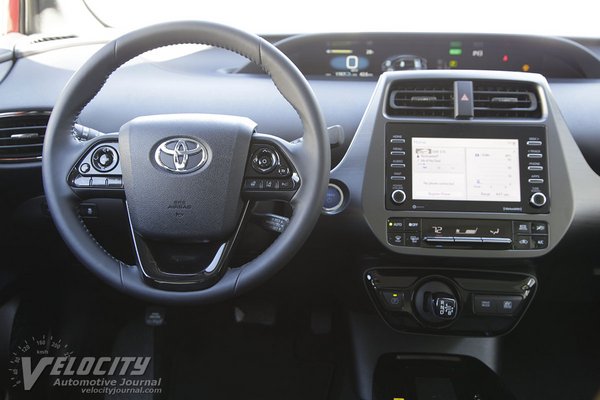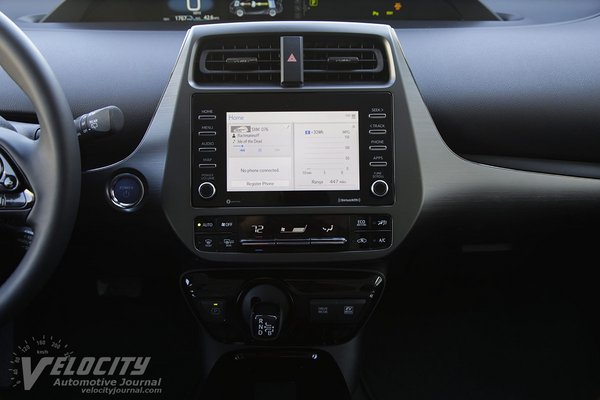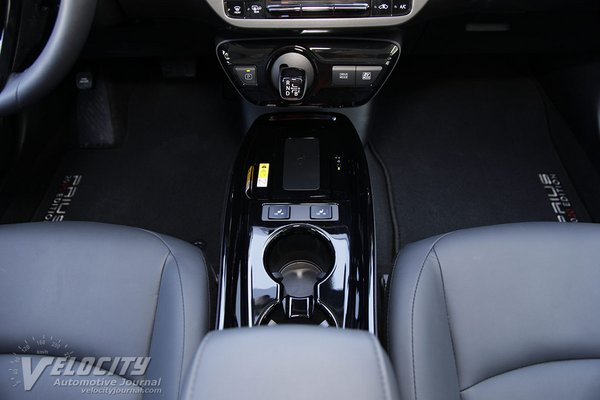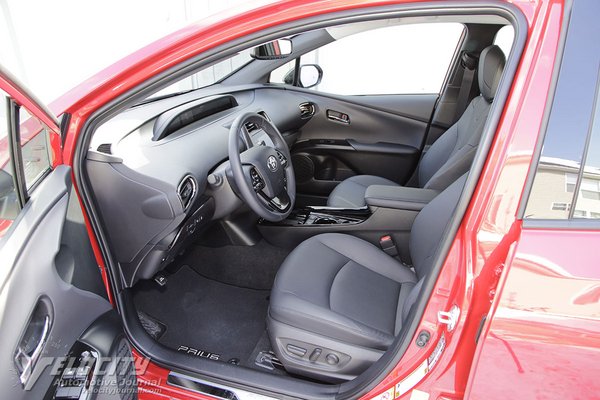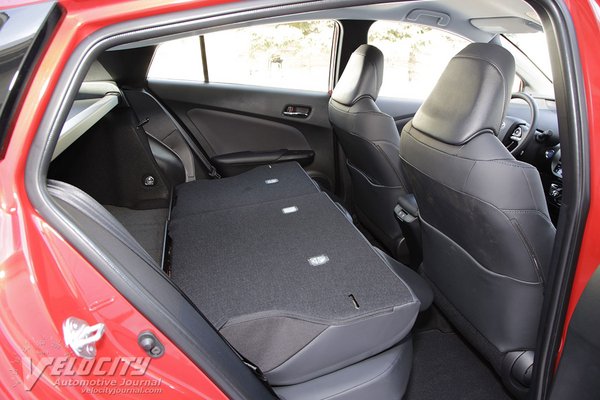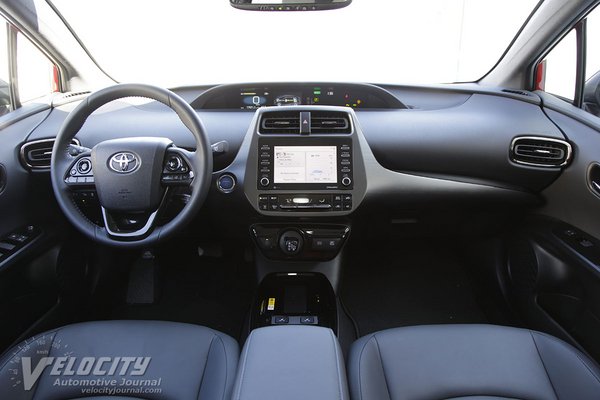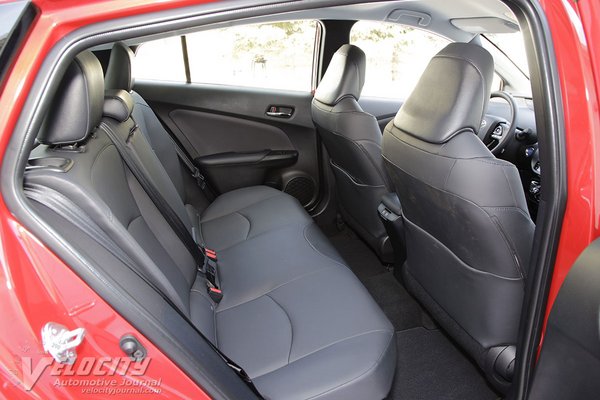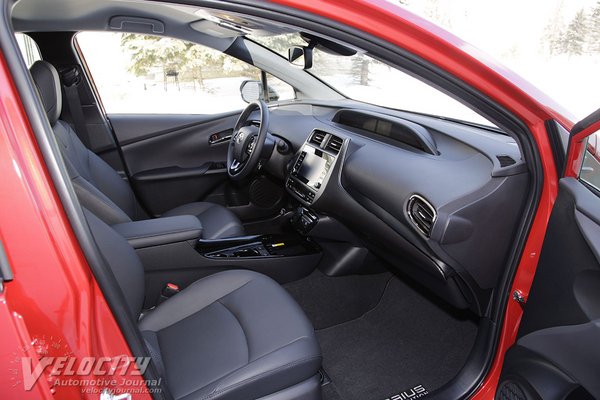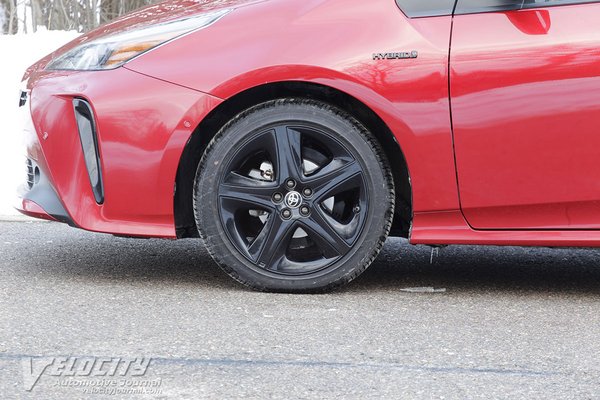2021 Toyota Prius 2020 Edition
09/19/2021
Shahed Hussain
Since the launch of the current Prius in 2017, Toyota has expanded the lineup to cater to different customers: plug-in charging (Prius Prime), more amenities (Prius Limited) and all-wheel drive (Prius AWD-e). The most recent addition is the Prius 2020 Edition, celebrating the 20th anniversary of Prius sales in the US.
Prius models start at the base L Eco for $24,525 and range up to $32,650 for the Limited. Both the midrange LE ($25,735) and XLE ($28,575) can be ordered with Toyota's dual-motor AWD-e system. The Prius 2020 Edition ($29,875) is a single specification model, positioned between the XLE and Limited. Our test vehicle was painted in Supersonic Red ($425); options consisted of a carpeted cargo mat ($90), illuminated door sills ($299) and glass breakage sensor ($359). The total MSRP totaled up to $32,043 including the $995 delivery fee. Significant standard equipment includes heated front seats, 8-way power driver's seat with lumbar support, head-up display, Qi wireless charging, 7" touchscreen, Apple CarPlay, Android Auto, Amazon Alexa, 17-in. alloy wheels, rear spoiler and LED headlights. Radar cruise control, lane departure alert with steering assist, blind spot monitor, intelligent clearance sonar, and pedestrian detection are part of Toyota's Safety Sense active safety technologies.
All Prius models are powered by a 1.8L all-aluminum Atkinson cycle inline-4 with dual overhead cams and variable valve-timing (VVT-i). The gas engine output is 96-bhp @ 5,200 RPM and torque peaks at 105 lb.-ft. @ 3,600 RPM. A 600V AC synchronous motor-generator delivers 53-kW (71-bhp) and 120 lb.-ft. of torque; total hybrid system power totals 121 bhp. Coupled to the gasoline engine and electric motor is an electronically controlled CVT (continuously variable transmission) driving the front wheels. A 207.2V/3.6Ah Lithium-ion battery pack powers the electric motor. A second motor drives the rear axle in AWD-e models. An integrated regeneration system switches the front motor into a generator to recharge the batteries in light to moderate braking. EPA fuel consumption ratings for the Prius 2020 Edition are 54/50 MPG (city/hwy.). We averaged 42-48 MPG in mixed city and highway driving, due to the cold weather during our review.
Replacing the semi-independent torsion beam rear suspension in the previous Prius, Toyota installed a multi-link setup with coil springs, dampers and a stabilizer bar. At the front are MacPherson struts and a stabilizer bar. Disc brakes are on all four wheels: 10.2-in. dia. front and 10.0 in. dia. rear rotors. Steering is a via an electrically-assisted rack-and-pinion system. The XLE, 2020 Edition and Limited models tire and wheel package consists of P215/45R17 Bridgestone Ecopia EP422 Plus all-season tires, mounted on 17-inch diameter alloy wheels. Smaller 15-in. alloy wheels and 195/65R15 tires are standard on the L Eco, LE, & AWD-e. Toyota specifies the 2020 Special Edition curb weight at 3,075 lbs.
The Prius continues its tradition of simple, functional interior design, but Toyota has upgraded interior materials using soft touch trim on the dash and door panels. As before, a central instrument cluster houses a digital speedometer and multi-function hybrid system status display. A leather-wrapped steering wheel duplicates controls for audio, phone and infotainment system. The 7" touchscreen controls most infotainment functions, but Toyota kept both volume and tuning knobs along with buttons for frequently used functions. Navigation is available via a software download from Toyota, but was not installed in the test vehicle. The shift lever has been moved up to the center stack, freeing up space for dual cupholders and a Qi wireless charging pad. Next to the shifter is an EV mode button that switches the Prius to exclusively electric motor drive. A storage bin under the center armrest conceals a 12V outlet and a USB port.
Toyota's Softex simulated leather front seats are supportive and comfortable. The driver gets 8-way power adjustability plus lumbar support, but the front passenger seat has only manual 4-way settings. Rear occupants benefit from acceptable legroom and comfort, but headroom is limited for passengers over 5-10" tall due to the low roofline. Although the rear seat can accommodate three passengers, the center position is tolerable for only short trips due to the hard center armrest. Dual USB ports behind the center console can recharge mobile devices for rear seat occupants.
Toyota has always focused the Prius on fuel efficiency above all, but the current Prius now delivers a driving experience closer to a typical compact sedan. Upgrading to a multi-link rear suspension contributes to significantly superior ride comfort relative to the previous-generation Prius. The electrically-assisted steering is tuned for moderate effort and transmits road surface textures accurately. Steering turn-in response is crisper than other Prius models due to the 17-in. wheel/tire combination. The suspension is tuned for mild understeer and body roll on winding roads, a bit more engaging than the dull handling of other Prius models equipped with 15-in. wheels and tires. Toyota's regenerative braking system engages automatically when coasting and braking to recharge the battery; the transition from regeneration to the conventional disc brakes is seamless at low speeds.
Driving on the highway, the Prius tracks steadily at 80 MPH. Wind, tire and engine noise are pleasantly subdued at highway cruising speeds. The suspension absorbs frost heaves and potholes, requiring minimal steering correction. In city traffic, the gas engine and electric motor combination deliver adequate torque, but at 70-80 MPH acceleration tapers off since the 1.8L inline-4 is the primary power source. At moderate throttle, the CVT does an excellent job minimizing engine noise and vibration. Mash the gas pedal, and the engine drones as the CVT selects the optimum RPM for maximum acceleration. Of the three drive modes (Normal, Power, and Eco), we mostly selected the Normal or Power mode. The Eco mode severely reduces throttle response, and is essentially unusable in urban traffic. For silent running in EV mode, the electric motor powers the Prius for 1-2 miles at speeds under 25 MPH, depending on the battery charge state.
The Prius 2020 Edition fits in a narrow niche between the XLE and the Limited. Essentially, Toyota took the XLE and added some exclusive exterior trim to create the 2020 Edition. Considering that the Prius XLE is less expensive and offers option packages unavailable in the 2020 Edition, we would recommend the XLE for most customers. But if a limited production Prius seems appealing, then the 2020 Edition may be worth considering.

